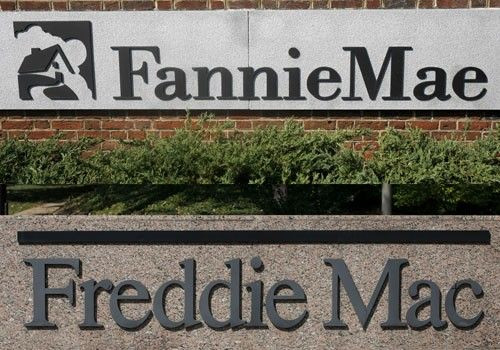Imagining U.S. Housing Without Fannie Mae And Freddie Mac
Analysis

The dissolution of Fannie Mae and Freddie Mac, the two largest U.S. mortgage guarantors, would have only a minimal impact on home ownership levels, according to a new report that downplays the link between low interest rates and increased ownership. But don't expect them to disappear any time soon.
The report by Dr. Nahid Kalbasi Anaraki for the Center for Data Analysis, titled A Housing Market Without Fannie Mae and Freddie Mac: Effect on Homeownership Rate, uses three data models. Anaraki argues that the effects of low interest rates on home ownership are secondary to other factors. These include household assets, expectation of future home price gains, personal saving rates, state and local tax rates, housing starts and the stock market.
Fannie and Freddie don't orginate mortgages. Rather, they buy and guarantee mortgages from lenders, freeing up more capital that can be used for additional loans. Under the Clinton and second Bush administrations, the government took steps to increase ownership by decreasing down payments and limiting monthly payments. As a result, the national home ownership rate peaked near 69.1 percent in the first quarter of 2005, according to the Census Bureau. But as the subprime mortgage crisis revealed, many of the homeowners who had been approved for loans were unable to make payments and eventually defaulted. Home ownership dropped to a 15-year low of 65.4 percent in the first quarter of 2012.
Anarki writes that eliminating Fannie and Freddie now would have only minor effects on the housing market, increasing mortgage interest rates by 25 basis points, or 0.25 percent, and leading to a 0.3 percent lower home ownership rate. The study found that interest rates had a slight effect on home ownership and effects varied depending on ethnicity. A 1 percent increase in interest rates lowered home ownership by 0.02 percent for whites and Hispanics and 0.05 percent for blacks.
The study casts doubt on the efficiency of subsidizing mortgage interest rates and down payments to raise the homeownership rate or eliminate homeownership gaps among races, wrote Anarki. The government is leveraging instruments which have proved to have little impact on homeownership rates.
But even if the government sought to unwind Fannie and Freddie -- a move some politicians endorse -- the process would be long and complex. The Federal Housing Finance Agency, which regulates Fannie and Freddie, noted in a recent report to Congress that the two agencies were responsible for 322,000 loan modifications in 2011, generally lowering monthly payments to ease the financial burden for existing homeowners. The agencies also hold 173,000 repossessed homes as of March 31, down from 218,000 in the previous year, but still represent a large policy question. Fannie and Freddie have explored bulk sales of properties to investors, who would convert the homes into rentals, but such efforts have only made up a small fraction of the holdings.
Fannie and Freddie also form the bulk of the secondary mortgage market, which encourages loan orginators like Wells Fargo & Co. (NYSE: WFC) and JPMorgan Chase & Co. (NYSE: JPM) to approve mortgages and later sell them to the agencies. Without the guarantee of Fannie and Freddie -- and by extension, the support of the federal government -- lending standards would tighten and sales would fall, according Jonathan Miller, among other housing experts.
So, while Anaraki's report may minimize the influence of Fannie and Freddie on future home ownership, they remain a critical part of the existing fragile housing market.
© Copyright IBTimes 2024. All rights reserved.





















